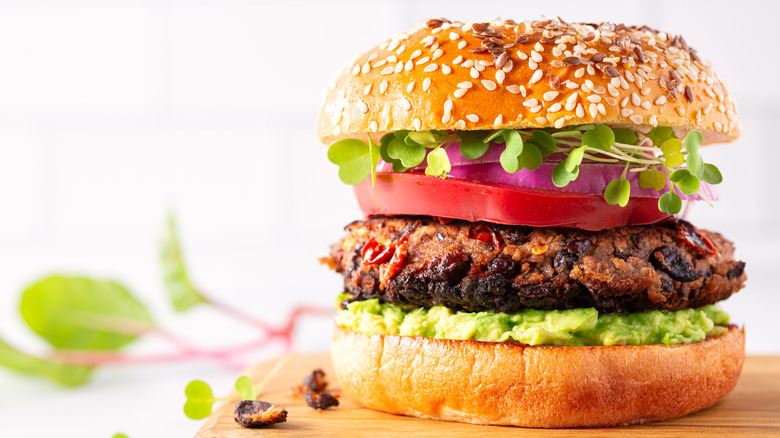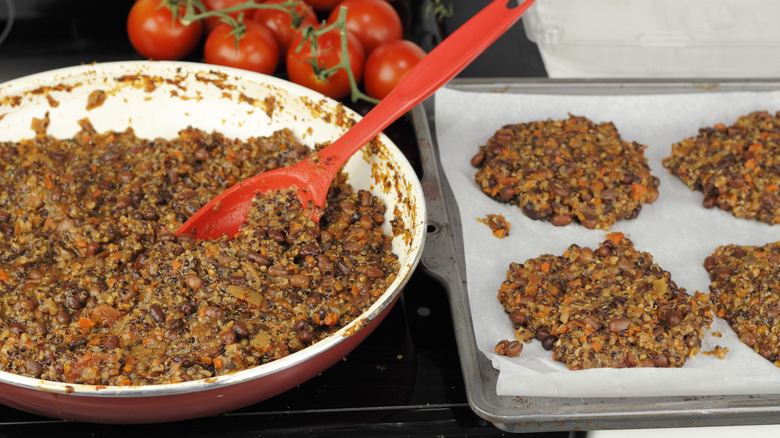Avoid This Big Mistake When Cooking Bean Burgers
Bean burgers are a great homemade vegetarian or vegan substitute for traditional meat burgers. But though these legume-based patties are just as delicious as their meaty counterparts, preparing them requires extra care. Most importantly, you'll need to avoid cooking the bean burgers on a barbecue grill as they can easily fall apart, turning your tasty meal into a frustrating mess.
Grilling seems like the obvious choice for cooking burgers, however, the veggie variety benefits from a different approach i.e. a flat surface. The reason is that bean burgers, especially the vegan variety, are made from a mixture of legumes, vegetables, and sometimes grains, which don't hold together as easily as meat patties. This delicate structure, therefore, relies on a surface that will securely hold up the burger as it cooks, so we recommend cooking on a griddle or in a pan. Apart from offering structural support, these solid surfaces allow for equal heat distribution which ensures your patties cook evenly.
Additionally, when turning your bean burger during cooking, you'll need an equally sturdy spatula for the job. In this case, consider the same spatula that's best for flipping smash burgers, which are also prone to breakage. Enter the metallic turner spatula: It's thin, so it easily goes under the pattie, and thanks to its wide base and strong frame you can lift the burgers in one intact piece.
Proper mixture for intact bean burgers
Besides a flat cooking surface and sturdy spatula to flip your bean burgers, there are some other tips that'll ensure your patties stay intact: starting with the right ingredients and preparing the mixture correctly. First, you need to include a binder in your legume mix. The most common option is eggs, however, if you want an entirely plant-based burger, there are more than a dozen alternative binders for your vegan burgers including flax seeds, oats, and quinoa flour. These seeds (and seed derivatives) acquire a gummy texture when heated in a bit of moisture which helps hold together all the other components in the bean burger.
Secondly, how you prepare the mixture is crucial. Using a food processor, blitz the mixture to form a fine consistency, which makes it easier for the elements to bond and remain intact. Too coarse and you'll have a crumbly patty that's prone to breakage and too fine (like a puree) and you risk an unappealing mushy texture of the finished burger.
Additionally, shape your legume mixture into patties that aren't too big. If they're too wide or too thick, that increases the chances of the burger falling apart since it can't hold up all its own weight. Aim for ½- to ¾-inch thickness and 4 to 5 inches in diameter. Finally, chill your patties in the refrigerator for about a couple of hours to firm them up before cooking. Enjoy your cooking, and happy eating.

